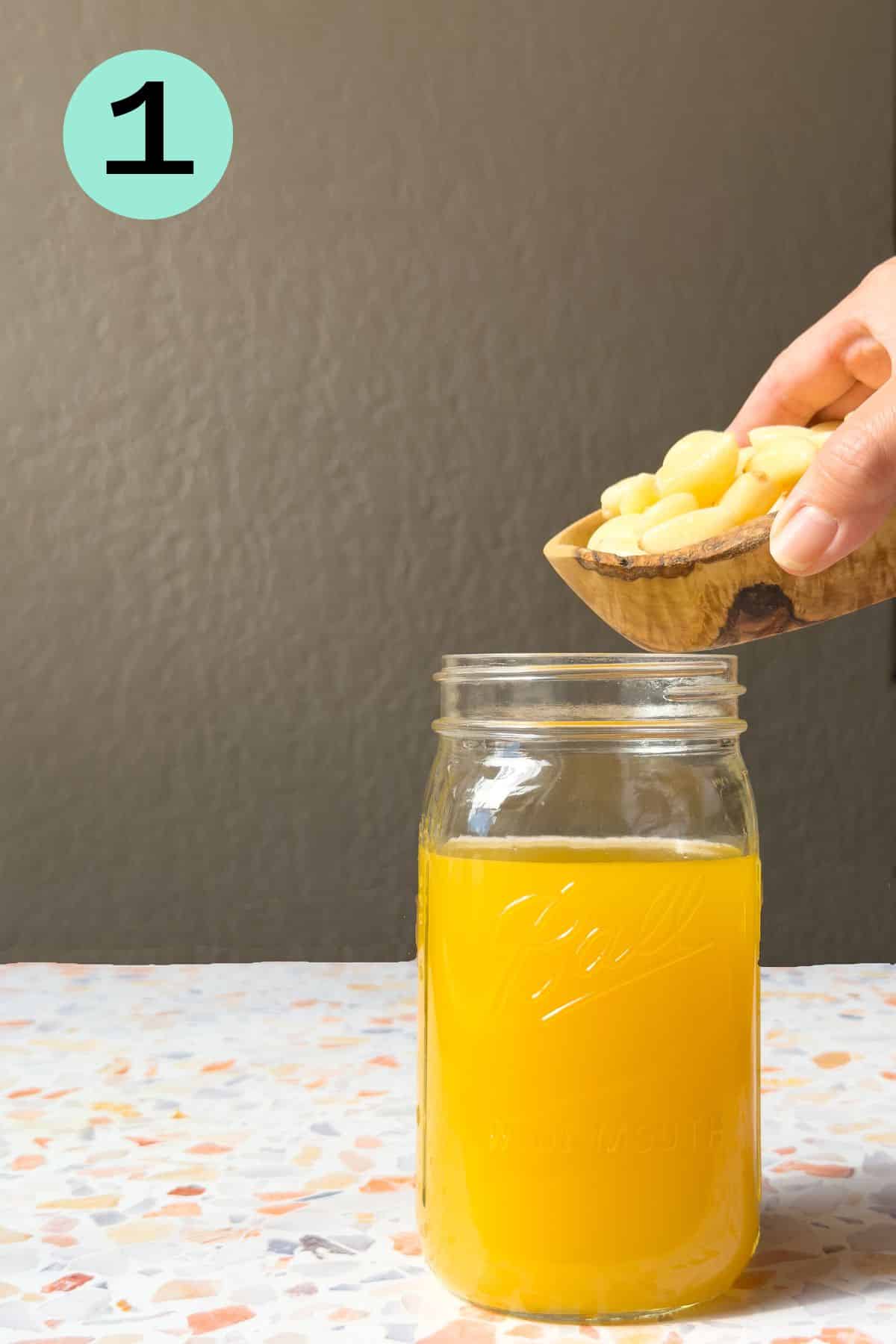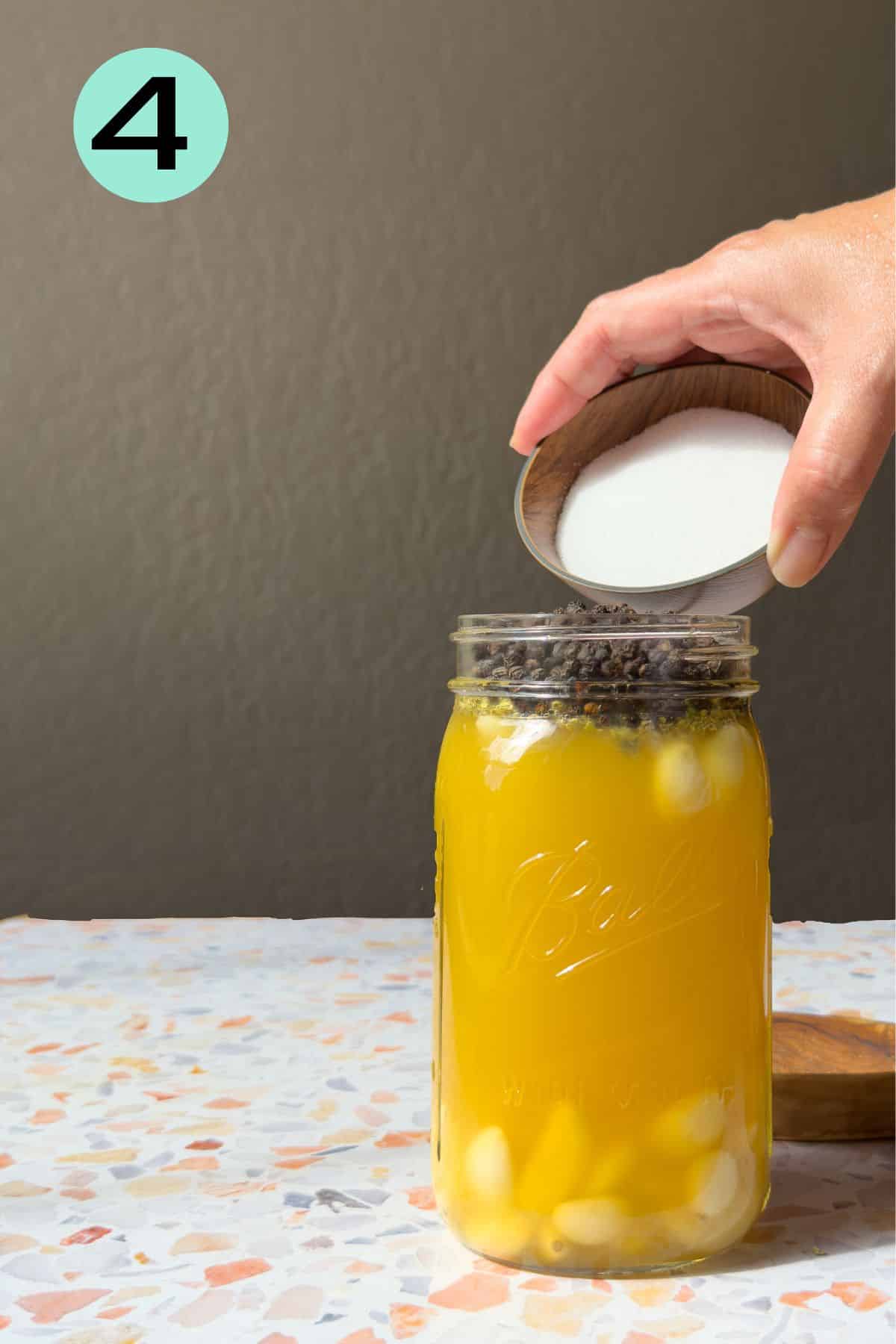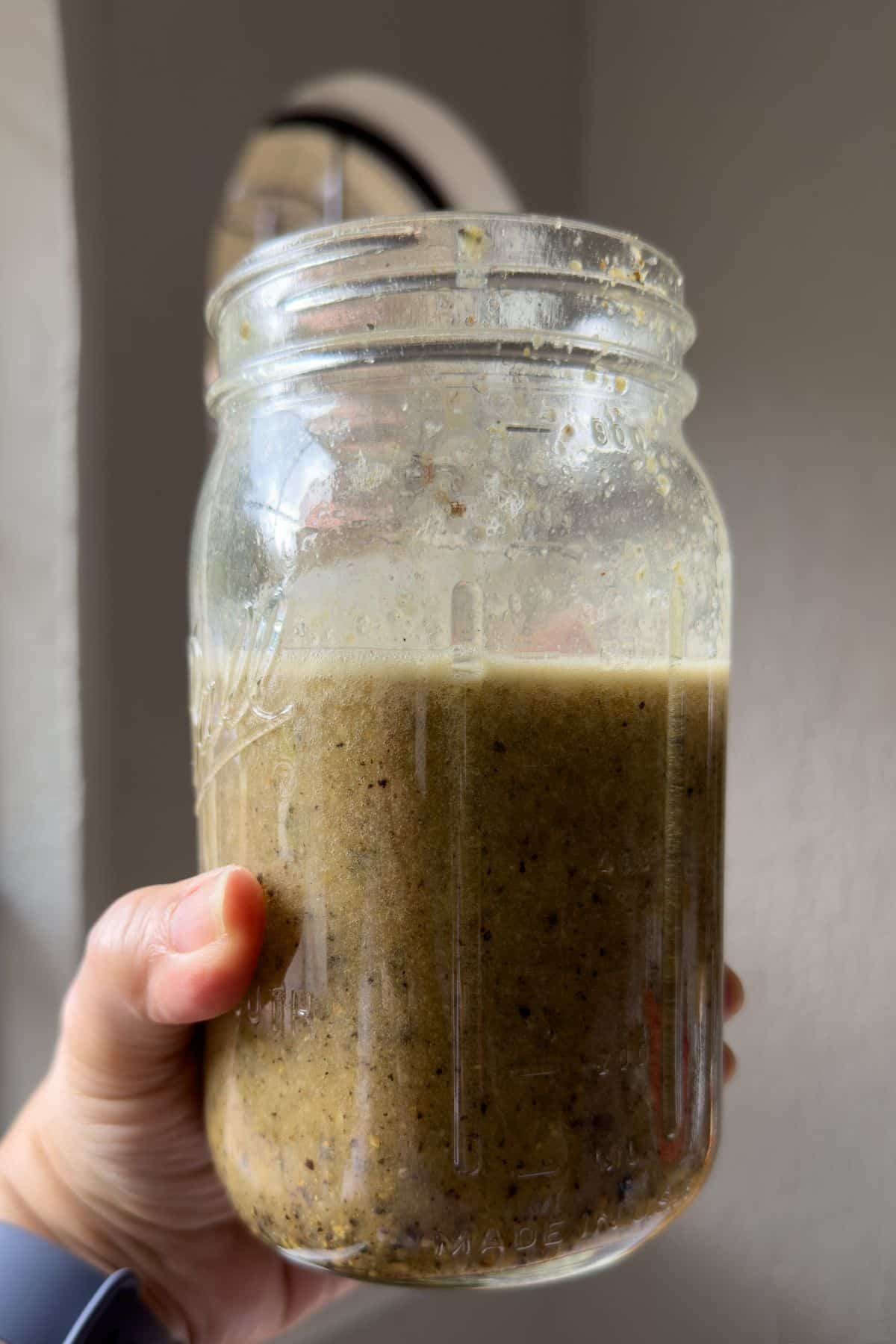Mojo Marinade is a flavorful Cuban sauce with garlic, sour orange juice, and various herbs and spices. Use mojo to marinate and flavor meats, especially pork and chicken.
Mojo is a versatile sauce that adds a distinctive Cuban flair to dishes thanks to its combination of sour orange, garlic, and spices. Its bold and tangy profile makes it a favorite in Cuban cuisine. This marinade is essential in the Caribbean pantry, along with Adobo and Sofrito.
Mojo can tenderize meats or be a dipping sauce for tostones or yucca. Here are some more recipes in which you can use mojo as your key seasoning ingredient: Chuletas Freitas (fried pork chops), Pinchos (Puerto Rican kabobs), Pernil (Pork Roast)
Jump To
Why this recipe works
- Versatility: I used to marinate meats like pork and chicken, although I have marinaded flank steak, which is delicious. Mojo is excellent as a dipping sauce for tostones or yucca, as well as a drizzling sauce over boiled root vegetables.
- Easy to make: Pour ingredients into a jar or blender, blend, and use or refrigerate.
- Flavor Powerhouse: The citrus and garlic blend, adding peppercorn and oregano, creates a powerhouse of flavors that does not overpower any protein, but it does provide an authentic Caribbean taste to your dishes.
Ingredient Notes

- Orange Juice: The critical ingredient to the citrusy marinade. Mojo, traditionally made with sour orange juice, but regular orange juice would work just as well.
- Garlic: Lots of garlic gives mojo its robust and aromatic flavor.
- Herbs and Spices: Common additions include oregano, black peppercorns (or medley), and cumin. I did not use cumin for this particular recipe, but cumin is a regular in my pantry, and I have used it on many occasions to make mojo.
See my recipe card below for a complete list of the ingredients with measurements.
Variations and Substitutions
- Lemon and Lime Juice: Add a ratio of one-quarter cup of lime/lemon juice per cup of sweet orange juice. I have made it without the lime, and it works well, but the lime will add more acid and sourness to the final product.
- Onions: Onions add both sweetness and spicy bite to this marinade.
- Chili Peppers: Depending on your taste, add spicy peppers like jalapeños or habaneros to add a spicy kick to this marinade. Traditionally, both in Cuba and in Puerto Rico, the flavor profile of these cuisines is bold flavors but not spicy. However, please feel free to make this recipe your own.
How to make Mojo
Here are the step-by-step instructions to make mojo marinade. If you are using a mason jar, make sure the vessel is big enough to hold all the ingredients. Unlike me when I was shooting these pictures.

- Add orange juice to a large mason jar or the pitcher of a blender. Add garlic.

- Add oregano.

- Add Peppercorns.

- Add Kosher Salt.

- Blend all ingredients until there are no big chunks of garlic.

How to use Mojo to marinate different types of meats
Use these guidelines depending on the meat and the application.
- Seafood: Yes, you can use this on seafood. I would not marinate with it, but add it to the pan or grill as you cook. To use as a marinate, marinate for about 5-10 minutes, no longer. The acid would cook the tender protein.
- Chicken or Poultry: Two hours to overnight. In a pinch? Thirty minutes to an hour over the counter, but it must be cooked immediately after that.
- Pork: MInimum, at least three hours to overnight. You might get away with 48 hours if you have a pork roast like a picnic shoulder or a ham, which Pernil is usually made from. Tenderloins are definitely 3 hours to overnight, and Pork Chops, a thinner cut of meat 30 minutes to an hour if left over the counter, but again, they must be cooked immediately after marinating or 8 to 12 hours under refrigeration.
- Beef: Beef skirt or skirt steak, flank, brisket, and maybe some ribs could marinate for 4 hours overnight, maybe up to 48 if you forget. Thicker cuts of meat like Chuck or Round would need more extended hours, like overnight, up to 48 hours.
Print the marinade guideline and tape it to your mojo jar for easy access when you use the sauce.
Expert Tips
- Peppercorns vs. ground pepper: Whole peppercorns add a different flavor profile and aesthetic to the marinade. A marinate is made so the product you are seasoning sits or bathes in it for a while. The whole peppercorn adds its spiciness and its floral bouquet when used whole.
- Any quick marinating that sits over the counter must be cooked that day.
- Always shake the marinade.
- Flip or turn the protein as it marinates.
- Storage: I have tested these marinades and condiments. Because of the amounts of oil and acid, they have lasted me up to a month and sometimes longer while still giving me bright aromas and flavors—experiment at your discretion. Always use an airtight container, and label your product with the name and date of production.
Recipe FAQs
Mojo is made of citrus, originally sour orange. Still, with availability and diaspora, mojo has been adapted to combinations of different citrus, like traditional orange juice with lemon, lime, or both. You may try making it with grapefruit juice, adding a more floral profile to the marinade.
Mojo Isleño is a tomato-based sauce used on the island of Puerto Rico mostly on seafood. Not that it can be used with any other protein. Mojo Criollo is a citrus/garlic seasoning that, besides being used as a marinade, can be used as a dipping sauce for tostones and yucca.
You can use mojo to marinade any meat, from seafood to beef. Scroll up to see my guidelines for using mojo as a marinade.

More Condiment Recipes
I want to know what you think! Did you make this recipe? Please leave a review and a rating below. You can also find me on Instagram! Please sign up for my email list to receive my newest and latest recipes.
📖 Recipe

Mojo Marinade
Equipment
- Immersion Blender or standard blender
Ingredients
- 4 cups Orange Juice
- ½ cup Garlic
- ½ cup Oregano
- ½ cup Black Peppercorn
- ¼ cup Kosher Salt
Instructions
- Add orange juice to a large mason jar or the pitcher of a blender. Add garlic.
- Add oregano.
- Add Peppercorns.
- Add Salt
- Blend all ingredients until there are no big chunks of garlic.
Notes
-
- Seafood: Yes, you can use this on seafood. I would not marinate with it, but add it to the pan or grill as you cook. To use as a marinate, marinate for about 5-10 minutes, no longer. The acid would cook the tender protein.
-
- Chicken or Poultry: Two hours to overnight. In a pinch? Thirty minutes to an hour over the counter, but it must be cooked immediately after that.
-
- Pork: MInimum, at least three hours to overnight. You might get away with 48 hours if you have a pork roast like a picnic shoulder or a ham, which Pernil is usually made from. Tenderloins are definitely 3 hours to overnight, and Pork Chops, a thinner cut of meat 30 minutes to an hour if left over the counter, but again, they must be cooked immediately after marinating or 8 to 12 hours under refrigeration.
-
- Beef: Beef skirt or skirt steak, flank, brisket, and maybe some ribs could marinate for 4 hours overnight, maybe up to 48 if you forget. Thicker cuts of meat like Chuck or Round would need more extended hours, like overnight, up to 48 hours.
-
- Peppercorns vs. ground pepper: Whole peppercorns add a different flavor profile and aesthetic to the marinade. A marinate is made so the product you are seasoning sits or bathes in it for a while. The whole peppercorn adds its spiciness and its floral bouquet when used whole.
-
- Any quick marinating that sits over the counter must be cooked that day.
-
- Always shake the marinade.
-
- Flip or turn the protein as it marinates.
-
- Storage: I have tested these marinades and condiments. Because of the amounts of oil and acid, they have lasted me up to a month and sometimes longer while still giving me bright aromas and flavors—experiment at your discretion. Always use an airtight container, and label your product with the name and date of production.








Comments
No Comments